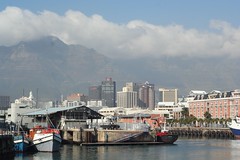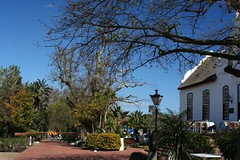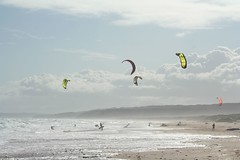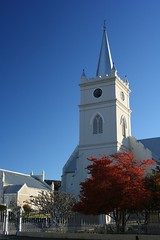
Click on pic to see slideshow
or here to access the set
It’s not surprising that when the Dutch settlers arrived at the southern tip of Africa in the 17th century they decided to make this place their home. It’s also not surprising that when the British started foraying into this land, almost 150 years later, they too, decided they liked it so much, that it had to be theirs. I too, felt the irresistible attraction of this land, its superlative, fascinating beauty, and wondered how the life of the first winemakers who started shaping the vineyards around Stellenbosch and Franschhoek may have been, and how the first farmers who crossed the Swartberg pass into the immense and empty Karoo picked the right patch of land to settle on.
The landscapes of the Cape Province will literally bring a smile onto your face. Before arriving here I had no idea that everything would be so abundantly green. Even the seemingly barren hilltops of the less humid Karoo region are covered with shrubs that glisten in all shades of green under the hard African sun. This may be the case just because it’s the end of winter now and it has been raining often recently; a summer landscape may be quite a different story – the beautiful coastlands of California come to mind, with their luscious foliage frenzy during the short spring and the scorched yellow tones which last the whole long summer.

Click on pic to see slideshow
or here to access the set
There are quite a lot of things to see in the Cape Province, the most visited in South Africa. Like everybody, we began with Cape Town, the big happy village, a very relaxed and relatively safe big city, with a pretty downtown that reminds of a mid-size American town with its not-too-tall skyline and the pedestrian shopping area, the older, more bohemian streets where the bars and clubs are now concentrated, and the pretty restored waterfront, bustling with locals and tourists on a stroll. Quite an American-looking town indeed, except that it has a diamond-shaped fort in the middle, with bells, cannons and guards wearing the proper historic attire and performing an outdated ceremony for the sole benefit of tourists and their cameras.

Click on pic to see slideshow
or here to access the set
From Cape Town we moved eastward to explore the many wineries that cover the gentle hills of the region. Estates with imposing white gates and names like Blaauwklippen, Neetlingshof, Spier, Steenberg, Chamonix, Haute Cabriere, and Fairview are now all a blurry mix of memories, but I surely won’t forget the good times we had with all the bottles of excellent wine we bought there. Although wine tasting, Angela’s favorite “hiking”, is an activity very alien to my personality, I must admit it is very instructive and makes a good opportunity for pretty pictures.
From these vine-heavy tiny hills separated by miniature mountain ridges the drier, flatter Karoo, is just a stone throw away. The vegetation changes, the nights are cooler and the towns are more spread out. This is the land of ostrich farms, game reserves, winding, never-ending highways, where baboon families can be seen looking for food by the side of the road and you can drive for a very long time without crossing another car. We spent a few days here visiting or just passing through small towns with fairytale-sounding names like Montagu, Oudtshoorn, Ladismith and Prince Albert.

Click on pic to see slideshow
or here to access the set
The journey continues south, along the Outeniqua mountain pass, to the ocean coast and then eastward again. This part of the seaside, so aptly named “The Garden Route” brings forth yet another type of gorgeous landscape, to keep the traveler happy: thick, green coniferous forests, pearly lakes and lagoons, steep hills cascading into furious waves, and picture-perfect little towns tucked between sea, rocks and sand dunes. We spent a couple of days at a beach backpacker hostel in the remote Buffalo Bay, where the doors didn’t have latches or locks and the whole lodge, owners, staff and guests seemed to be just another large family. As I write this, we are staying in an ocean-side cabin in the Tsitsikamma national park where we hiked a bit, cooked a bit and mostly did nothing all day long. Tomorrow we’ll be on the move again heading back westward slowly toward Cape Town, on a different route than the one we took to get here, through endless fields of yellow canola and wheat, green at this time of the year.






No comments:
Post a Comment